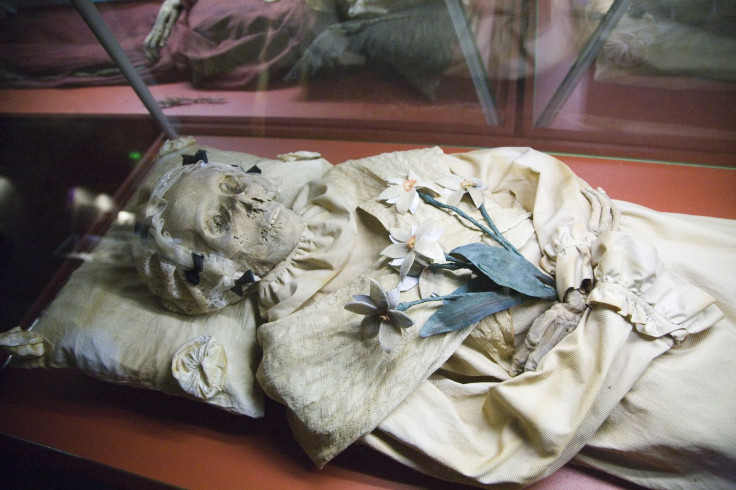Tuberculosis Sampled From Mummies In 18th-Century Hungarian Crypt Come In 14 Separate Strains

Because infectious diseases may evolve over time, scientists do not know whether strains of tuberculosis or TB from the past (including those appearing in Europe when it was most deadly) are related to the strains we see today. A new study suggests mixed and therefore more dangerous infections may have been common during a time when TB was near peak prevalence in Europe. Mummified bodies found in an 18th century crypt in Hungary yielded 14 separate genomic sequences of M. tuberculosis, say University College London researchers.
Though definite signs of tuberculosis appear in fragments from the spinal columns of Egyptian mummies dating back to 2400 B.C. — and though Hippocrates wrote about consumption around 460 B.C. — it was not until the 17th century that exact anatomical descriptions of the pathology of TB began to appear in the literature. Later, in 1882, Robert Koch, a German physician and pioneering microbiologist, claimed tubercular infections accounted for one in every seven deaths. While scientists continued to learn much about this infectious disease since then, it’s still unclear to them when exactly TB reached its peak in Europe. A new study, though, provides some interesting clues.
The research begins with the 1994 discovery of a crypt in the Dominican church of Vác, Hungary. The crypt housed the remains of affluent Catholics who died during the 18th and early 19th centuries. Within it, researchers found the remains of over 200 individuals who had undergone natural mummification. What's even more special is that their names and dates of death are available from written records maintained by the church.

For the current study, then, the researchers decided to take up where past investigations, showing half of those sampled had been infected with TB, left off. Specifically, the researchers used a technique called “metagenomics” to identify the DNA of TB strains in these strange historical specimens. In other words, they directly sequenced DNA from the samples without growing bacteria. This approach draws on modern and likely more accurate (and certainly more deep) DNA sequencing technologies and techniques.
“Amazingly, there was a group of children born between 1750-1755 who were all TB positive,” Dr. Helen Donoghue, a professor of infection and immunity at UCL and co-author of the study, stated in a press release. She and her colleagues speculate that, before the industrial revolution, TB co-existed with its host and waited for a traumatic period of life (such as during illness or famine) to emerge as a virulent disease.
By comparison, analyses of contemporary TB patients usually report a single strain of TB per patient, in the case of the Vác mummies, five of the eight bodies yielded more than one type of TB and one body produced three distinct strains. Using their deep sequencing techniques, the scientists not only detected different lineages, but they also mapped them to contemporary DNA lineages, with one strain showing remarkable similarities to what is now found in sub-Saharan Africa.
Based on the newly acquired evidence, the authors rule out theories that "wholesale replacement" may have taken place over time, with one major lineage supplanting another. Instead, they confirm "the genotypic continuity of an infection that has ravaged the heart of Europe since prehistoric times."
TB more than equals, then, the worst imaginings of those who consume tales of mummies and vampires. No matter how decrepit, this ancient infection simply will not die.
Source: Kay GL, Sergeant MJ, Zhou Z, et al. Eighteenth-century genomes show that mixed infections were common at time of peak tuberculosis in Europe. Nature Communications. 2015.



























